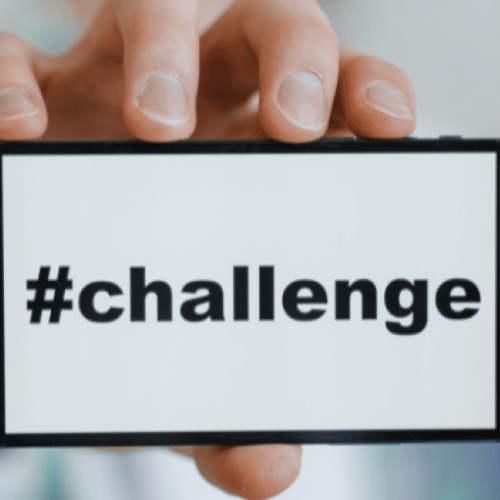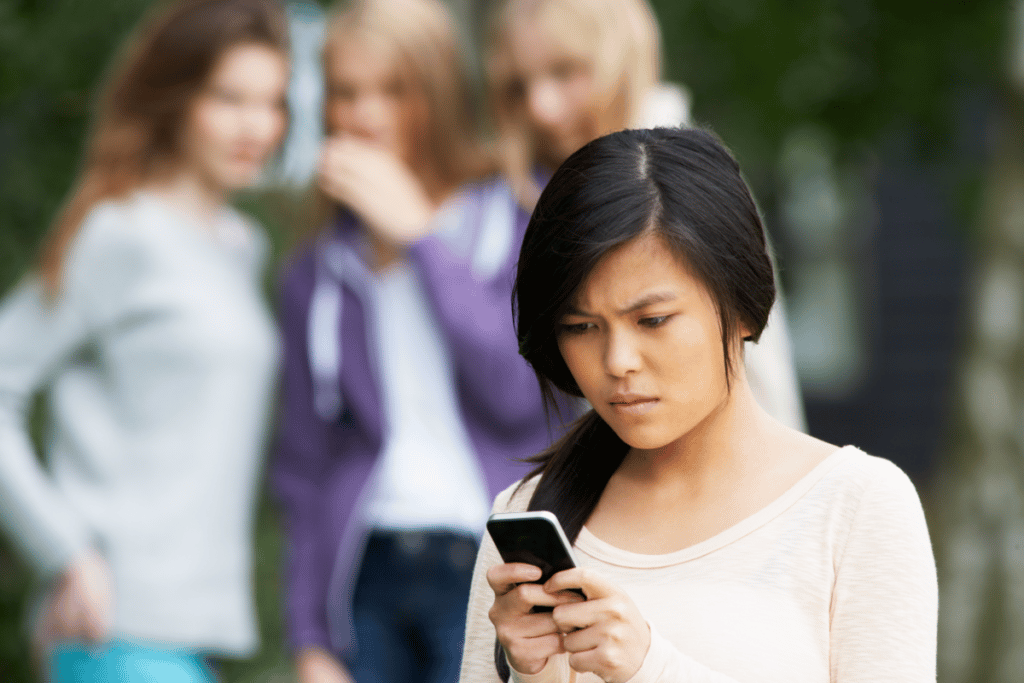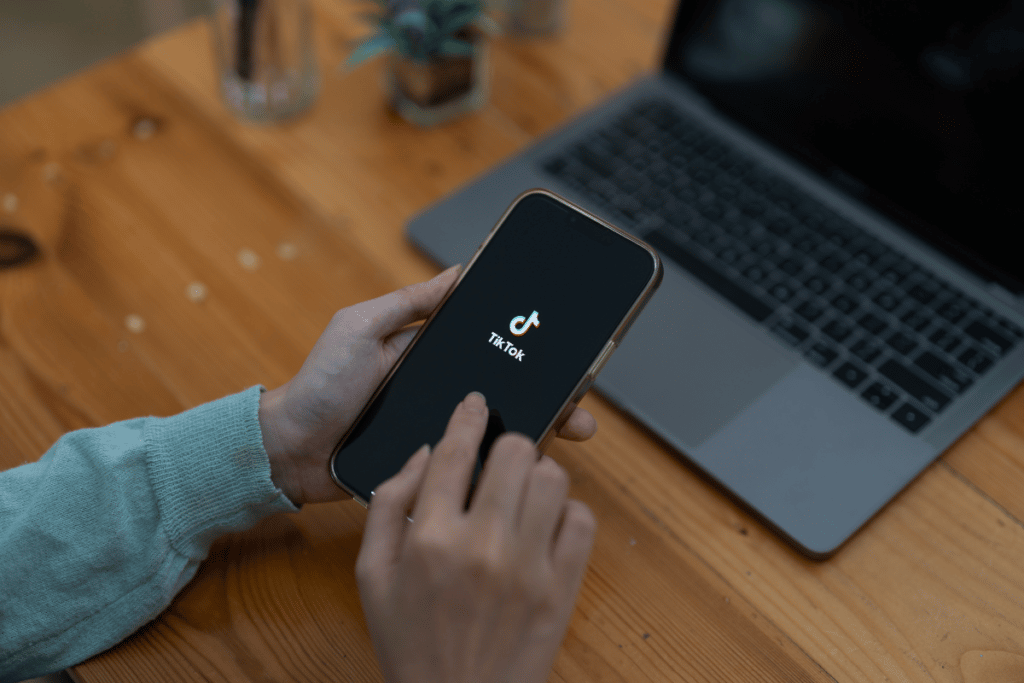A Parent’s Guide to TikTok
TikTok has rapidly gained immense popularity in the world of social media, particularly among teenagers and young adults. Despite its success, many are worried about the app’s safety. In this guide, we delve into TikTok’s background, examine the potential risks it poses to youths, and provide some tips for parents on how to safeguard their children.

- Content last updated on:
- June 24, 2024
Written and edited by our team of expert legal content writers and reviewed and approved by

- Content last updated on:
- June 24, 2024
What is TikTok?
TikTok is a social media platform that is based on short-form video. Initially, videos could be 15 seconds to one minute long. This was eventually expanded to three minutes, and TikTok now allows videos up to 10 minutes in length. Video creation is simple, and users can apply filters, music and effects to videos. TikTok provides a feed where users can scroll and watch videos. TikTok determines which videos to display using proprietary artificial intelligence (AI) to “learn” individual user preferences.
Who Created TikTok?
TikTok was Established by the Chinese technology company ByteDance in 2016. Since then, the TikTok app has been downloaded over 2.6 billion times in more than 150 countries. TikTok set a record among all apps in the first quarter of 2020, with 315 million downloads. With 138 million active users in the United States alone, TikTok is especially popular among young people. More than 60 percent of users are under the age of 30.
Why is TikTok So Popular?
TikTok attracts audiences of all ages, and videos can go viral, gaining millions of views in a matter of days, even if the creator does not have a large following. TikTok’s strong appeal can be attributed to the following:
- Opportunities to interact with celebrities
- Ease of use
- Creative outlet
- Fun
- Social
Pros and Cons of TikTok
When used as intended, users rarely experience harm, but there are pitfalls parents should be aware of.

Pros
TikTok does offer some advantages over other social media platforms.
Safety Features
TikTok seems to put forth more effort than other social media platforms to protect teens, offering the following safety features:
- Media literacy – a video series designed to teach young people to think critically about the content they view and create
- Body inclusivity – TikTok partners with the National Eating Disorders Association (NEDA) to prevent and remove content that promotes eating disorders. Users who search for such content are directed to the NEDA helpline.
- Digital well-being – features that help users regulate their time on TikTok
○ Screen Time Management allows users to establish a daily time limit
○ Restricted Mode limits access to content that may not be appropriate for all audiences - Self-harm and suicide mitigation – When users search for content related to suicide or self-harm, TikTok displays regional emotional support hotline numbers and additional helping resources.
Creative Outlet
TikTok provides an excellent opportunity for youth to unearth and display their creative talents, including singing, dancing, video production, artwork and even poetry.
Monetization
TikTok offers multiple ways for teens to make money, including partnering with brands to sell products, earning money based on engagement and earning tips and appreciation gifts.
Cons
TikTok has many of the same drawbacks as other platforms.
Addictive Algorithm
A leaked document produced by TikTok’s engineering team revealed an in-depth explanation of how the company’s understanding of human behavior, including information about boredom and human responses to social cues, is used to make the app addictive.
The app is eerily adept at detecting preferences and desires. Some users have remarked that the app knows them better than they know themselves. This makes it even easier for TikTok to provide videos that keep users hooked.
The algorithm is designed with two ends in mind: to keep users on the app as long as possible and to ensure users return. The result is that users are served a neverending feed of enticing videos.
Disturbing or Offensive Content
Unlike other social media platforms, the content available to TikTok users is not related to whether the user is following the creators. This makes it difficult to prevent your teen from seeing objectionable content. If your teen watches and engages with videos that pertain to mature topics, your teen will be exposed to more of these types of videos.
While setting an account to Restricted Mode does prevent some of this, this feature does not work perfectly, and your teen can easily switch this back or set up a separate account.
Collection of Information
TikTok collects more user information than any other social media app, and many of the information miners on the website are third-party apps. One study found this to be true even for accounts that had opted out of third-party tracking. This creates privacy and safety concerns since there is no way to know who is collecting personal information or how it is being used.
TikTok Challenges

Challenges are activities that social media users challenge one another to complete, and they are especially popular on TikTok. Most challenges are silly and harmless, such as Jimmy Fallon’s tumbleweed challenge, where he challenged people to roll on the floor like tumbleweeds. Surprisingly, that challenge and garnered more than eight thousand participants and nine million views.
Challenges may involve trying new dance moves or cooking. A TikTok survey found that one in five teens has participated in at least one challenge through the app. Unfortunately, some challenges are dangerous, illegal or risky. One in 50 teens admitted to participating in these types of challenges. For example:
The blackout challenge, also known as the choking challenge or pass-out challenge, encourages people to hold their breath until they lose consciousness due to the lack of oxygen. This particular challenge initially became popular more than a decade ago, and social media has brought about a resurgence in its popularity. During the challenge, children use readily accessible items like scarves, ropes, or blankets to cut off their oxygen supply to achieve a temporary high. If the oxygen deprivation continues for too long, it can result in brain damage or death.
In the first several years of its existence, the blackout challenge caused the deaths of more than 80 children. This prompted the U.S. Centers for Disease Control to release an official statement about the challenge and a list of signs that a child might be participating in it. Possible indications that a child is attempting the blackout challenge include:
- Severe headaches
- Disorientation
- Bloodshot eyes
- Marks or bruising on the neck
Some children who participate in the challenge livestream their experience, while others practice without anyone knowing. Although it’s not clear how many recent fatalities are directly tied to the blackout challenge, reports suggest that at least 15 children who were 12 or younger have died from the challenge in the past two years.
TikTok maintains that they are not responsible for individuals who choose to participate in the challenge and that they take steps to discourage dangerous behavior. Nevertheless, several lawsuits are pending over harm to children who discovered the blackout challenge through the platform.
Excessive drinking has long been a concern for parents of college-aged kids, but the borg TikTok trend has introduced new dangers on college and university campuses nationwide. The term borg stands for blackout rage gallon, a concoction consisting of alcohol, water, flavoring, and a hangover remedy such as Pedialyte.
Borgs are not a new creation, but their popularity on TikTok has inspired students to binge-drink gallon jugs of the potent mixture. Drinking such large quantities of alcohol in a short period can lead to alcohol poisoning and injuries.
The hazards of borgs are playing out at colleges across the United States. For example, in March 2023, the University of Massachusetts Amherst issued a press release responding to the presence of borgs on campus. The university reported that more than two dozen ambulance transports were necessary on a single night for students who were suffering from the effects of alcohol consumption while attending off-campus parties.
Benadryl, a common over-the-counter antihistamine and allergy medication, is part of a potentially fatal challenge that has been making the rounds on TikTok for several years. When participating in the challenge, a person takes between 12 and 14 pills at once, which is more than twice the recommended daily dose.
Ingesting a large dose of Benadryl can cause hallucinations and a sensation of being high. Part of the challenge involves filming a person as they experience these side effects and posting the video on TikTok or other social media platforms.
In 2020, the U.S. Food and Drug Administration issued a warning about the Benadryl challenge. In the statement, they explained that exceeding the recommended dosage of Benadryl can have life-threatening effects, such as:
- Heart problems
- Seizures
- Coma
- Death
The Benadryl challenge has proven fatal in several instances, including a 13-year-old boy in Ohio who died after a week-long hospitalization in April 2023. Many other children have needed emergency care and treatment after attempting the challenge.
Unlike many other TikTok challenges, the devious licks challenge doesn’t necessarily pose a risk of bodily harm. However, it does encourage disruptive and criminal behavior. In this challenge, students film themselves vandalizing or stealing property from schools and posting the experience on TikTok.
The devious licks challenge began with a student who stole disposable face masks, but it has since escalated to much more destructive behavior. Students who take part in the challenge have targeted classrooms, administrative offices, and building exteriors, but they tend to focus their attention on bathrooms, where they can cause damage without teachers and administrators watching them. Schools have reported many types of damage, including:
- Broken floor tiles
- Smashed laptops
- Dismantled sinks, toilets, and urinals
- Stolen supplies
In response to this growing trend, some schools have instituted new rules for bathrooms, such as limiting the number of students who can use the facilities simultaneously or requiring students to get permission before entering. Police in some states have also arrested and charged students as young as 15 for committing vandalism, theft, and criminal mischief in schools. These charges can significantly impact a student’s academic future and ability to succeed.
Many risky TikTok challenges encourage children to participate in activities that are harmful to themselves, but the skull-breaker challenge involves inflicting pain on others. In this challenge, two people convince a third person to jump in the air. They then kick the third person’s legs out from under them, causing them to fall to the ground. In most cases, the third person is unaware of what’s happening, leaving them unable to catch themselves when they fall.
The possible consequences of taking part in the skull-breaker challenge are alarming. A 13-year-old boy in New Jersey was taken to the hospital with a concussion after two other boys pranked him. In addition to the short-term pain and suffering that he experienced, his parents reported that he was also facing lasting effects, including headaches and lethargy, more than a month after the initial incident occurred.
The repercussions for the teen boys at fault were also severe. They were both charged with aggravated assault and endangering an injured victim. By participating in the skull-breaker TikTok challenge, these young boys may have permanently altered their futures and the life of their classmate.
One of the most horrifying and hazardous TikTok challenges is the fire challenge. This challenge began when TikTok creator and actor Jack Jerry filmed a video of himself spraying hairspray on a bathroom mirror and lighting it on fire. Viewers were amazed by the visual effect and commented with requests for other shapes, including stars, circles, or lightning bolts.
Although Jack Jerry may not have intended for other TikTok users to imitate his behavior, his videos quickly went viral, and soon teens worldwide were attempting to light fires in their bathrooms.
Lighting a fire in a confined space is dangerous for anyone, but it’s especially unsafe for a child or teenager with little experience controlling and putting out fires. Several young people have fallen victim to the fire challenge, including a 13-year-old girl who suffered severe burns on her neck and arms, requiring multiple skin grafts and a lengthy stay in the intensive care unit.
A similar challenge known as the flamethrower challenge poses similar risks. Rather than lighting fires in bathrooms, people attempt to create makeshift flamethrowers using cans of spray paint. In April 2023, a 16-year-old boy in North Carolina was burned on almost 80 percent of his body when the challenge went wrong, and the can exploded.
In addition to endangering themselves, people who participate in these fire-related challenges also pose a risk to other individuals. If a property were to catch fire or an innocent bystander happened to stand too close, the effects could be devastating.
Additional Concerns with TikTok
Kids and teens are not equipped to manage all the challenges a platform like TikTok creates. Some are not emotionally mature enough to handle negative comments. Some have low self-esteem and social anxiety that can be perpetuated by such comments.
Many teens lack the necessary self-restraint to avoid excessive and problematic use of such platforms, and some are easily taken advantage of by other devious teens and predatory mature users.
Mental Health Issues
A bipartisan coalition of attorneys general from at least eight states has launched an investigation into whether TikTok’s algorithm is harmful to younger users. Its specific purpose is to determine how TikTok has tried to boost engagement and keep young users addicted to the app.
Addiction
In addition to the previously discussed addictive algorithm, the social aspects of TikTok exploit the brain reward system. The need for belonging and acceptance is a driving force during the teen years, and the brain reward system reacts strongly to positive social cues. On social media, these occur in the form of feedback such as likes, shares and comments.
As the compulsion for positive feedback strengthens, TikTokers resort to increasingly extreme methods to get such feedback, including behavior that is dangerous, provocative and inappropriate. Their lives may start to revolve around this. They may stop enjoying real-life activities and only participate in them as a means to obtain material to post on TikTok.
Addiction is a serious condition that requires intervention. Willpower or self-discipline alone is not sufficient to overcome addiction. In extreme cases, inpatient treatment may be required. Untreated social media addiction can lead to other mental health disorders including anxiety and depression.
Mental Health Conversations
Teens are not always aware of appropriate boundaries surrounding information that should and should not be shared. The result is they tend to overshare on TikTok and often with regard to mental health challenges they are facing.
This can expose them to cruel responses that encourage self-harm or suicide. Oversharing also exposes their personal struggles to the world, and this information can be used against them in real life also.
False Information
False mental health information is rampant on TikTok, and teens often attempt to self-diagnose using TikTok videos. This is a dangerous trend that can prevent teens from receiving necessary treatment or cause them to resort to dangerous or ineffective remedies.
In a phenomenon known as “social contagion,” doctors observed a marked increase of teen girls with facial tics during the COVID-19 pandemic after videos by influencers with facial tics and Tourette Syndrome had become popular.
Suicidal Ideation
The teen suicide rate is on the rise, and this correlates with increased social media use. Videos depicting suicide occasionally appear on TikTok, and pro-suicide videos are not uncommon. Some cyberbullies also encourage suicide. With this increase in suicide rates, it’s important to know how to identify suicide risks in your kids.
While TikTok prohibits these behaviors, users find ways around the rules and use codes to indicate that a video is about suicide. These videos tend to have large followings.
Sexual Predators
Wherever kids go, sexual predators will follow. When kids set up public accounts, or if they indiscriminately accept followers, they open themselves up to being contacted by sexual predators. Children have a strong tendency to overshare, and they can be overly trusting. They could unwittingly provide location information to sexual predators.
The Department of Homeland Security is currently investigating TikTok amid multiple reports of TikTok failing to remove child sexual abuse material. TikTok has a poor record of preventing sexual predators from entering the app, and reports of grooming by predators abound.
Scams
TikTok is rife with scammers, and young people are an easy target. While legitimate businesses and advertisers do offer products and services on TikTok, scammers present themselves as legitimate businesses.
Kids between the ages of 10 and 14 are popular targets. One scam offers $10 to download an app. Kids download the app, give away personal information and never see the promised funds.
Scammers also use tactics like video shaming, where they threaten to publicize an embarrassing video if the user doesn’t pay. Other common scams include the following:
- Offering likes in exchange for money
- Phishing (emails purportedly from TikTok that request personal information)
- Sales of fake influencer badges
- Fake influencers promoting products that do not exist

Cyberbullying
Cyberbullying occurs when electronic media is used as a means to hurt, intimidate, harass or humiliate another person. This occurs on TikTok in the following forms:
- Fairy comments – Mean comments surrounded by loving emojis
- Cruel comments
- Using the duet feature to repost videos in harassing or humiliating ways
○ The duet feature allows users to post videos
side-by-side with existing videos. - Posting videos that are designed to intimidate, harass, threaten or humiliate
- Cyberbullying has stronger effects than real-life bullying because there is no escape, even when the victim is home. The hurtful comments can go viral, and the effects can be all-encompassing. It is even more hurtful when cruel comments and videos are liked and shared by large numbers of people.
Suicide is more strongly associated with cyberbullying than real-life bullying.
Pursuit of Fame
A select few teens have managed to find fame and fortune through TikTok, and more than a few others are willing to engage in high-risk behavior to achieve the same. Teens tend to see themselves as invincible, and they are not risk-averse.
This has led to a number of tragic deaths and life-altering accidents. Here are just a few examples:
- 18-year-old Timothy Isaiah Hall died attempting a “fishtailing” stunt in his pickup in hopes of impressing his 273,000 followers
- 12-year-old Joshua Haileyesus died after attempting the #Blackout Challenge
- 29-year-old Renard Smith narrowly missed snapping his spine while attempting the #MilkCrate Challenge (a challenge that involved standing on a stack of milk crates)
- 21-year-old Big Brother star Tilly Whitfield permanently scarred her face and temporarily lost vision in one eye when attempting to emulate a cosmetic technique she learned on TikTok
Protecting Your Children on TikTok
While TikTok offers a suite of parental controls, there is no substitute for parental supervision and open communication with your teen. While TikTok provides some protections, these are easy for children to circumvent. A candid discussion can raise your teen’s awareness of the risks and help your child see you as an ally when trouble strikes.

Age Restrictions
TikTok restricts full access of its app to users under 13 years of age. The platform does offer children under 12 a limited experience where they can view and create videos, but they cannot share videos, maintain a profile or interact with others.
TikTok asks for the date of birth when a user signs up, but there is no age verification requirement. This makes it easy for young users to enter inaccurate information so they can set up accounts before they turn 13. In the first half of 2021, TikTok removed more than seven million underage accounts.
Privacy Settings
Setting an account to private gives users control over who sees their content. Only approved followers will be able to see and interact with your teen’s videos and communicate through direct messages. Public accounts allow any TikTok user to see and interact with your teen.
Accounts for users under the age of 16 are set to private by default. A separate feature, which is also turned off by default, allows users to determine whether their account can be suggested to others. Either of these settings can be easily changed by your teen.
Parental Controls
TikTok offers a feature called Family Pairing, which allows parents to link their own TikTok accounts to their teen’s account. This feature allows parents to do the following:
- Establish time limits
- Limit unsuitable content
- Manage the teen’s privacy and safety settings
You can also become one of your teen’s approved followers. This will enable you to do the following, even if you do not take advantage of the family pairing option:
- Monitor the types of videos your teen posts and views
- Identify when your teen is experiencing cyberbullying
- Monitor interactions and watch for signs of grooming by sexual predators
If you do not wish for your child to use TikTok, you can use the parent control setting on your child’s Apple or Android device to restrict your child from downloading it. Your teen will still be able to view TikTok content on the web browser but will not be able to interact or create content from their phone. Keep in mind however, that they can access TikTok from any internet-connected phone or tablet, like one they might use at a friend’s house.
If your child does download TikTok, you will need your own TikTok account in order to follow your child or use the family pairing option.
Getting Started with TikTok
Your teen may be more tech-savvy than you, but that doesn’t mean you have to be left in the dark. Setting up a TikTok account is simple, and monitoring your teen’s activities will not require you to become a tech geek.
Setting Up an Account
To get started with TikTok, you will need to download the app from the App Store or Google Play store. You will have the option of signing up using your email or an existing social media account. You can then add a profile photo and an 80-character bio.

Navigating TikTok
After your account is set up, you will be able to start watching and creating videos. Your home screen will show videos from your country. You will be able to like, share and comment on videos and view the profile of the creators. You can add your own videos by clicking the plus button at the bottom of the screen.
Your Discover page will display suggested videos. You will also have an inbox where you can receive direct messages from other users.
The easiest way to find and follow your child is through your child’s QR code. TikTok provides every user with a QR code, which can be accessed through your account profile. Ask your child to pull up the QR code on his or her device, then use your device to scan it. This will bring up your child’s profile, where you can submit a follow request for your child to approve.
TikTok only allows users to set one account to private, so if your child does set up a second account, one of the accounts will have to be public. These accounts can easily be found in a search if you suspect your child has opened a second account.
What to Do if Using TikTok Harms Your Child
If you believe your child has been harmed because of TikTok, the attorneys at The Social Media Victims Law Center can help you identify resources to help your teen and advise you of your legal options. You may be entitled to compensation.


